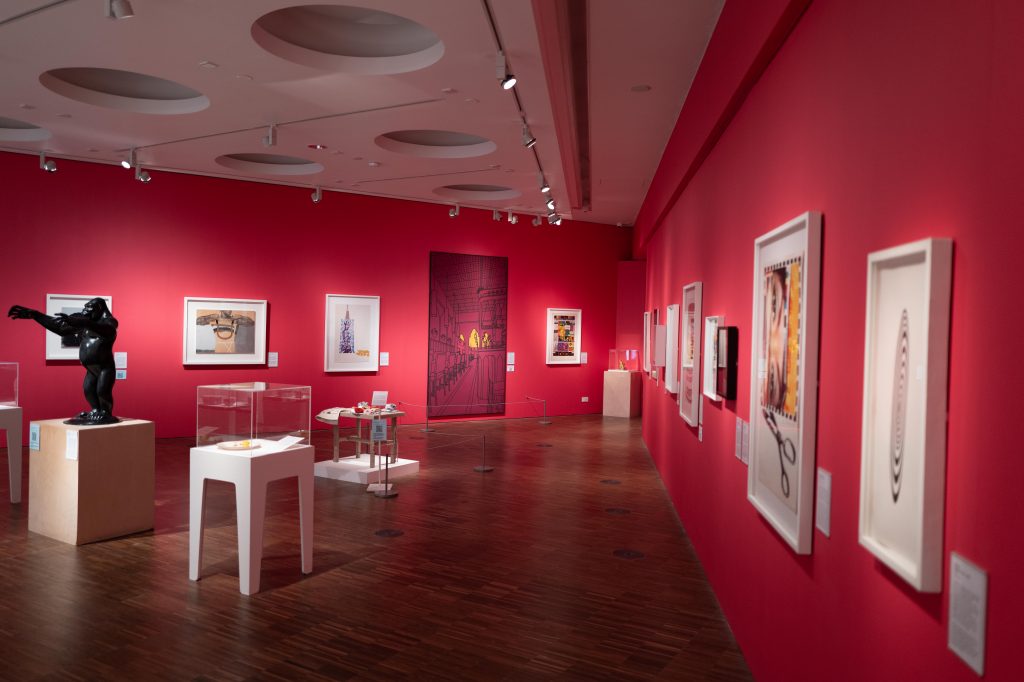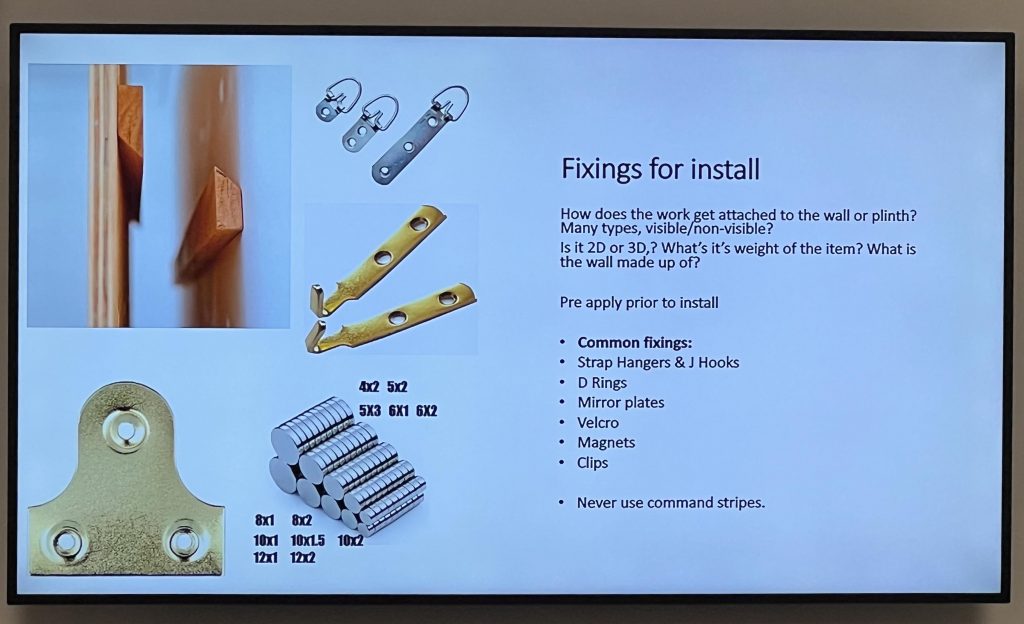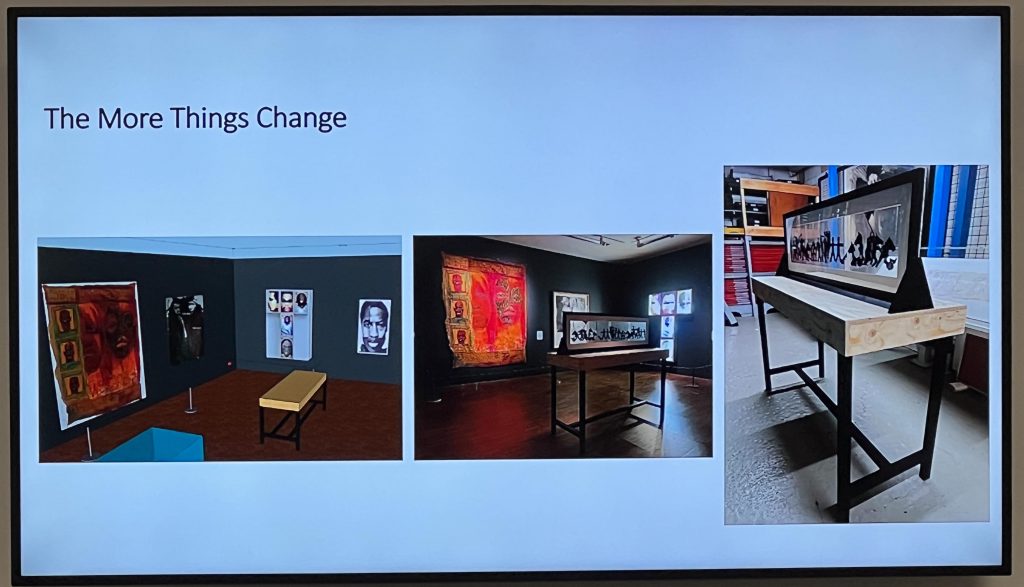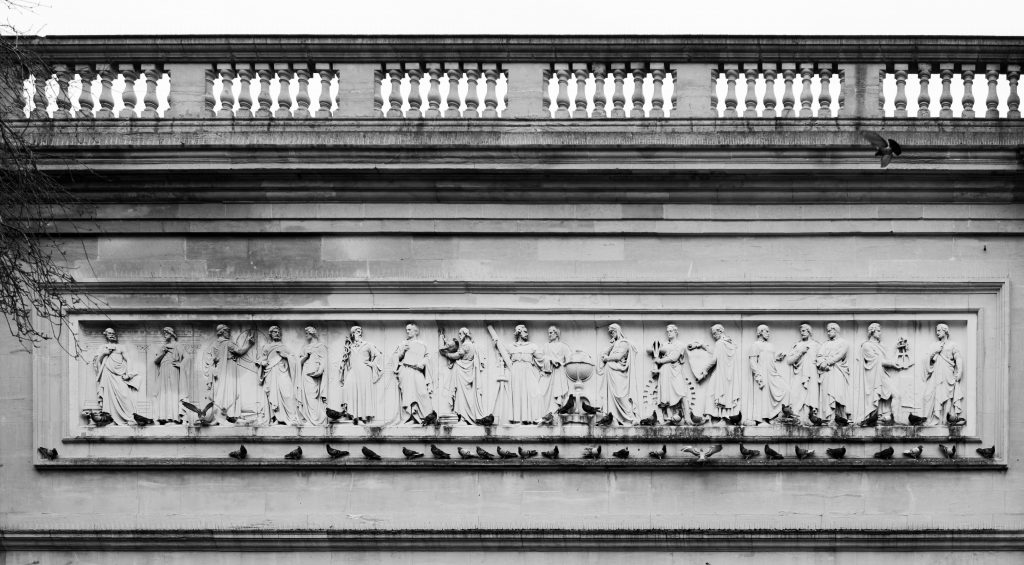Thursday 7th March 2024
As well as all of the things we covered on the Tuesday this week, we also had a couple of talks from people in the lecture theatre MK045.
The first was from Naomi Greaves who is the Technical Officer at Wolverhampton Art Gallery.
Her slide deck was titled Technical Aspects to Planning and Installing Exhibitions.
She introduced herself as a graduate from Wolves in 2006 as part of the Fine Art course and featured mostly printing and linocuts etc.. She has worked many jobs to keep the money coming in and became self employed in 2007, working to create linocuts mainly until 2011.
She also worked in Gallery Sales, Front Of House Technician and Print Making Workshops for different audiences and companies. This carried on until 2018 when she started at the Wolves Art Gallery and has always worked on the technical side.
What is an Art Gallery & Museum Technician?
- Prep and planning of technical operations
- Not a curator but a technician, responsible for getting everything ready to hang and then hanging and looking after it.
- Design of exhibitions
- Preparation of gallery space
- Install and Deinstall of exhibitions
- Logistics, how to get work to and from the gallery.
- Health & Safety management, Risk Assessments, Method Statements and HSE Obligations.
- Care of collections, environmental conditions and some conservation.
How Are Exhibitions Programmed, Planned and Scheduled?
- Programming involves slotting exhibitions together years in advance
- Project meetings, collaboration ensures complete understanding across the teams.
- Technical Meetings to discuss what it will look like and other considerations for power lighting etc.
- Budget meetings where exhibition funding is discussed and calculations of costs are made.
- Project Delivery – Technical and Collection schedules, is the work available for the show? Wh o will install and how is it installed?
- Health & Safety, working at height, tools, RAMS, fixings, techniques and safety of visitors and staff.

Designing An Exhibition
- First there needs to be an understanding of the curatorial intent.
- narrative – What’s the story?
- Content- What is being exhibited?
- Interpretation – Consider the audience and language involved to better control the interpretation
- Access – What is the journey of each visitor, routes and heights of works being hung.
- Plans – 2D and 3D plans are very useful to calculate layouts and check sizes and limits
Naomi said that the works were hung at a midline of 150cm from the floor. So the centre of the height sits at 150cm from the deck. She also pointed out that the information labels are set at a midpoint of 120cm from the floor.

Technical Development of the Exhibition
- Content-Medium – Practical thoughts around the install
- Lighting levels – if AV is required then lower light levels necessary in some areas.
- Display Considerations – Plinths, boxes, vitrines, hang, borrow, make or buy
- Feedback – getting feedback from visitors makes it easier for the next exhibition to receive funding if done correctly.
- Seating – Dwell time where people sit on front of artworks can make a big difference.
- Safety, Security and Signage – Barriers and invigilation are important to protect the works from deliberate or accidental damage. Signage is required for dark rooms, flashing lights, bad language or nudity.

Examples of Exhibits
Wildlife Photographer Of The Year was put on October-December 2023.
There were 103 Lightboxes all requiring two electrical sockets at each to show off the backlit images that were spread throughout the gallery.

There are also other creative presentations that she shared with us on the screen,
- Melanie Tomlinson – Ghost Horses and Guns
- The More Things Change
- Black Country Beats

Naomi said that the Black Country Beats involved some complicated Plinth builds to ensure that the work was available to see at the right level whilst still making it obvious where the boundaries were.

Other Considerations
- Creation – In time, Presentation, AV work?
- Logistics – Sending work, Packaging, confirmation of condition before collection
- Exhibition Open/Close – Someone to open it, operator instructions for anything that needs resetting or reconfiguring, whether it is for sale or not and how the sale process occurs.
- De-install – Pack and return works, repair walls and make good the space.

Career?
Naomi said that she is on her MA Apprenticeship course now, and it’s a 2.5 year course with the Teeside University to become a qualified curator.
She recommended a website for short courses if you want to get into museum work. http://www.arttechspace.com

Other ways to learn and get into the work could include volunteering in museums and galleries, work experience, networking, applying to show your own work. She said that talking to people who work in these spaces is invaluable and lets them know that you’re interested and eager to get into it.
She answered a few questions after the main talk and did it very well, I can’t remember what any of the questions were now except mine which was “has the job you do ruined going to other galleries and exhibitions for you?” She said that it definitely had spoiled them a bit, as she is technically taking them apart to see what decisions had been made and whether there is anything that can be used in their own works.
After this presentation I went for a walk into the city centre and took a few photos, even venturing into the Art Gallery to see what the line of the artworks looked like on the walls. There were some pigeon photos to be had in the city too.


Marley Starskey-Butler
A multi-disciplined artist and social worker who had their first solo exhibition in 2023 at the Midlands Art Collective (MAC).
They studied art only to A Level standard and the rest is self taught by following a thread and unpicking the inspirations for this persons work then going back to trace their inspirations etc, then practicing at the work.
Starskey-Butler attributes a lot of the creativeness to BMX riding in their youth being able to see parts of a structure as a plaything instead of a dividing wall etc. They called it bending the environment to how they wanted to use it, a bit like Neo bending the Matrix in the computer controlled world I guess.
“A website is essential” they said, as they’d had some interest in a few instagram posts and this had pointed to the website where the viewer was able to see the process of the creation and how the long term nature of the work was continuing all the time.
Starskey-Butler told us about two examples of meetings with curators interested in the work being created. The first was attended as an interview in a coffee shop with some research but not enough, the curator was never heard from ever again. The second meeting was better prepared for with the questions learned from the first example being able to provide a framework for the prep needed for the second one.
The second meeting ended up with an exhibition at MAC called “Thirty-Six” which consisted of video, audio, photography and text around the journey that it has been to get to the age of 36. Starskey-Butler was pleased that it happened when they were 36 as the number 37 did not look good written down and felt like it wouldn’t have happened if they had been a year older or younger..
There is a lot of self deprecating humour coming across in the presentation and a certain nervousness that means they are reading from the large screen behind and not facing the audience in the lecture theatre. I think it is masking the uncomfortable nature of the contents of the exhibition as it was based upon the experiences of social care services as a kid and working in the sector as an adult.
Design
We were then shown the design scheme for the exhibition and where Naomi Greaves had used Sketch Up, Starskey -Butler had drawn it in pencil on graph paper, bot have their merits and they said that an investigation into SketchUp might be worthwhile before the next exhibition.

Finances
We were informed that the exhibition team offered Starskey-Butler £1000 fee and then were eventually helped to agree on a £2000 price, with 50% on signing and the other 50% on the opening of the exhibition. They told us that the cost of printing and framing as well as prepping the exhibition was £840 in the production budget..
Marley then shared a video of the marketing for the exhibition which was filmed on the same day of the exhibition opening and the production of it was pointed out as being a bit poor. The lighting in the video was not great but they explained that the video took longer than planned to complete and the daylight ran out meaning that the light in the background which should have been a fill light turned into a perfect rig to silhouette them completely.
Video appears to be good part of the production of work as there is a video of the final piece of work being framed and how it was pulled together.
The Exhibition Itself
The opening event for the exhibition was cancelled as a schedule clash with another larger and local exhibition meant that there would be fewer people attending, instead a number of their friends and colleagues attended resulting in a good evening. This proves that keeping an eye on scheduling is very important indeed.
Learning from people is another thing Starskey-Butler told us about, with viewers of the work explaining how the photos of scenery from train windows in an extract from the work zwischen actually looked like a window on the wall but this had never crossed the artists mind. I know it’s not the same but when I have shown work to people, there has often been a remark that I was clever linking these two images together, something that I hadn’t done on purpose for example.
The closing of the exhibition is also important and they had an artists talk for the week before the exhibition closed out. It was important to the artist that there were goodies and merch to hand out to attendees to proliferate the marketing and perhaps lead to more work. But it did take a long time to prepare all of the business cards, postcards and add personal messages to each.
Selected Thoughts about the Works.
Getting close to the end of the session and we still hadn’t seen any examples of the artist’s work, then they showed us some of it and how it related to the interactions with the social care services as a child and as an employee in the sector.
The exhibition 36 was primarily a photographic exhibition with some audio available on a single set of headphones that fit the exhibition well, as well as paperwork from the social services that detailed information about their start in life, with much of it being redacted.
One of the photos on display was that of Starskey-Butler’s birth mother who they met and spent time interviewing and photographing. The artist mentioned the word “Recontextualising” several times and this appears in their work as to how the information that detailed their childhood was used in a playful way leading to a better self-understanding.
The zwischen work was photos on their phone through train windows on the journeys to and from social cera services meetings where Starskey-Butler was involved in decisions that would ultimately take a child from their birth parents and move them into the care system, approve a fostering or adoption or any other number of options. The photos often reflected the mood of the artist at the time and they said that the photos reflected this when they looked at them. This is true of some of my work too, when I look at a piece of work I can often remember where I was, and the mood I was in at the time.
Starskey-Butler created and collected works all the time until a time came to collate them into a collection and then decide to use them in an exhibition. The artist recommended that we as artists, make records of everything we do that lead up to the final exhibition or collection. The fact that his is included on their website allows people to see the thought processes and this gives the work more heft when being considered.
Conclusion
These two artists talks were invaluable for me as it helps me contextualise the exhibitions and the requirements to prepare for the showing of our works. It allows us to think about the structured methods needed to plan for the delivering of work, installing it, invigilating it and then finally deinstalling it.
The Greaves presentation was easier for me to understand as I have a technical mind and I deal with similar project plans for my work on a regular basis, there are obviously more specialised parts in the plans for the art gallery side of it but I was feeling comfortable with the structure.
Starskey-Butler’s presentation was a little looser and less confident, possibly as it was only the second time they’d done an artists talk like this. The work didn’t appear until late in the presentation and I felt that weaving the work throughout the presentation might have helped knit it all together.
It was great to see inside the minds of two people in the industry and how different they both are. Their methods of presenting were vastly different too and this is not a bad thing. If everyone was the same and efficient the whole thing would start getting boring.
The notes I took from the presentations will hopefully serve me well in the forthcoming show at Eagle Works for Level 5 Photography and for any future events I attend or even become a part of.
Be First to Comment